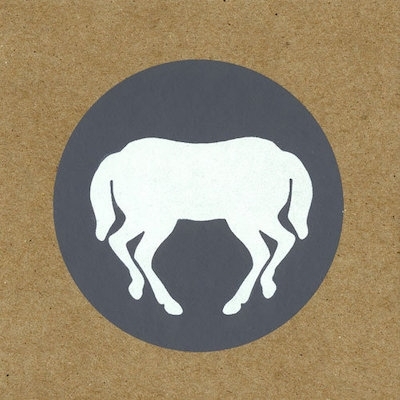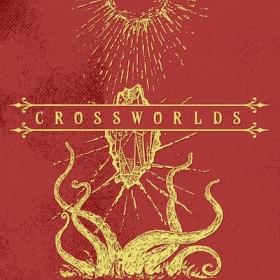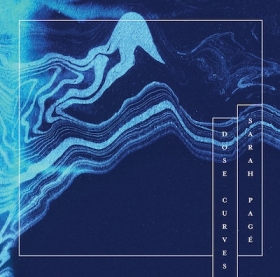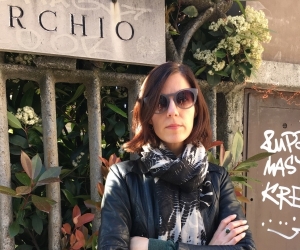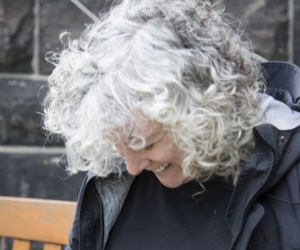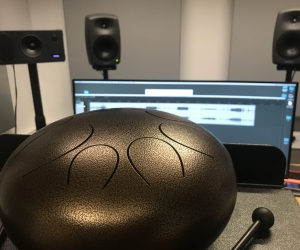What function do record labels fulfill in an era of streaming and algorithmic music discovery? What do labels offer artists and listeners when the means of music access and distribution are changing at a rapid clip?
Kyle Cunjak, who is a musician and the owner-operator of Halifax-based management company and record label Forward Music Group, is pondering his response to these questions, reflecting on what record labels have meant to him over the years. There is the role that labels play in supporting artists; when he was young, labels such as Montreal-based Constellation Records showed him a way into discovering music. And, of course, carefully curated labels function like a built-in recommendation system: if you like the music of one artist, you might find like-sounding artists on the same roster.
A spirit of thoughtful playfulness animates much of Cunjak’s work as the principal mind and curator behind Backward Music, the aptly named sister label of Forward Music, which grew out of the music scene in Fredericton in the early 2000s. Forward’s focus has largely remained the East Coast, supporting folk-adjacent acts like the Olympic Symphonium and Michael Feuerstack, for example. Most of the acts on Forward’s roster have members in common or collaborate with others on the label.
A group of artists began sprouting up around the Forward community, producing music that was more left-field than—or otherwise different from—the more straightforwardly pretty signature sound of the industry-facing Forward label. To support this community—and to reconnect with a more do-it-yourself approach to putting out records—Cunjak and the Forward team imagined Backward as a dedicated home for like-sounding experimental, abstract, and ambient music. Runs of physical copies would be small; packaging would be handmade. Forward’s logo, a horse, was flipped into an impossible, four-legged creature to represent Backward—an unexpected inversion that produced its own symmetry and beauty.
“We were getting to a point with Forward where things were requiring a lot more effort and investment, both financially and [in terms of] time,” says Cunjak. Backward is about embracing the spirit of experimentation and uncertainty. “And when you don’t try to do something, the best things can happen.”
This ethic of collaboration and play can be heard in Backward’s first release, the compilation CD Backward Music Vol. 1 (BKWRD001, 2016). Tim Crabtree—a quietly prolific artist, perhaps best known for his art-folk ensemble Paper Beat Scissors—was instrumental in the curation of the music on the album, which features ambient, guitar-driven work by Crabtree, kinetic solo compositions by accomplished percussionist Joshua Van Tassel, and contemplative, slow-moving chamber sketches by Bing & Ruth—New York-based, contemporary-classical, pianist-composer David Moore—who was not well known in Canada at that time. Backward released the record in limited-run CD format, packaged in silkscreened cardboard sleeves with a collection of black-and-white art prints. In both its sonic and tactile qualities, the record encourages one to pause and experience its sense of calm; listening to it for the first time is like discovering a hidden spring in a thick forest, still water reflecting tree-filtered light.
Several of the tracks from Vol. 1 were spun regularly on the omnivorous CBC Radio program The Signal, which stopped airing in 2017. The label’s success with listeners continues to surprise Cunjak. In terms of media coverage and radio play, Backward receives as much attention as Forward, which he views as “an indication that people are more adventurous than we often give them credit for.” It is also a reminder of why independent labels remain an integral element of the music ecosystem, he says. The curatorial vision of Backward means its releases share a connective tissue that encourages listener exploration: for example, a record store in Japan that was initially interested in Schofield’s ambient work ended up ordering other releases from the Backward catalogue.
That first compilation introduced Backward’s commitment to presenting beautiful, largely instrumental compositions on thoughtful, handmade physical releases. Cunjak and his partner Michelle Yorke work part-time at the label, as do a handful of other coworkers. Many manufacturing facilities required minimum orders for components such as LP jackets, which were higher than what the label required for particular releases. While the DIY component of Backward’s releases is a necessity, it has resulted in some particularly special objects. Van Tassel’s concept album Crossworlds (BKWRD019, 2018) had a gold-foil-stamped cover and was accompanied by a novella cowritten by him and Jordan Crute, with illustrations by Geordan Moore. Montreal harpist Sarah Pagé created the hand-silkscreened artwork for her first solo release, Dose Curves (BKWRD020, 2019).
Despite manufacturing challenges due to the pandemic, Cunjak says Backward is busier than ever, thanks to an “endless amount of music” being created by its community. Montreal-based composer Nick Schofield’s Glass Gallery (BKWRD023)—an eleven-part instrumental work created on a vintage Prophet-600 synthesizer and inspired by the spaces of the National Gallery of Canada—was released in February 2021. In December 2021, the label put out What Was That (BKWRD027), a collaboration between Senior Citizen (Bob Deveau) and Tim Walker, the first Backward releases to feature sung lyrics. Both Deveau and Walker are members of Fredericton band Grand Theft Bus, one of the first artists on Forward.
In 2022, Backward is releasing Synth Works Vol. 2 (BKWRD025)—a second volume of modular synth compositions by Montreal’s Mathieu Charbonneau (Avec pas d’casque) and Pietro Amato (The Luyas, Bell Orchestre)—and, later in the year, will release new music from Van Tassel, Pagé and Joni Void, Nick Schofield, and others.
No matter how busy things get, Cunjak also hopes he and his collaborators can hold onto the sense of play that fueled Backward in the beginning. “The idea of using Backward as an outlet for experimentation has gone out the window a little bit,” says Cunjak. “Now, maybe we’re going to have to start a third label—another side label—to fuck around and find out.”
